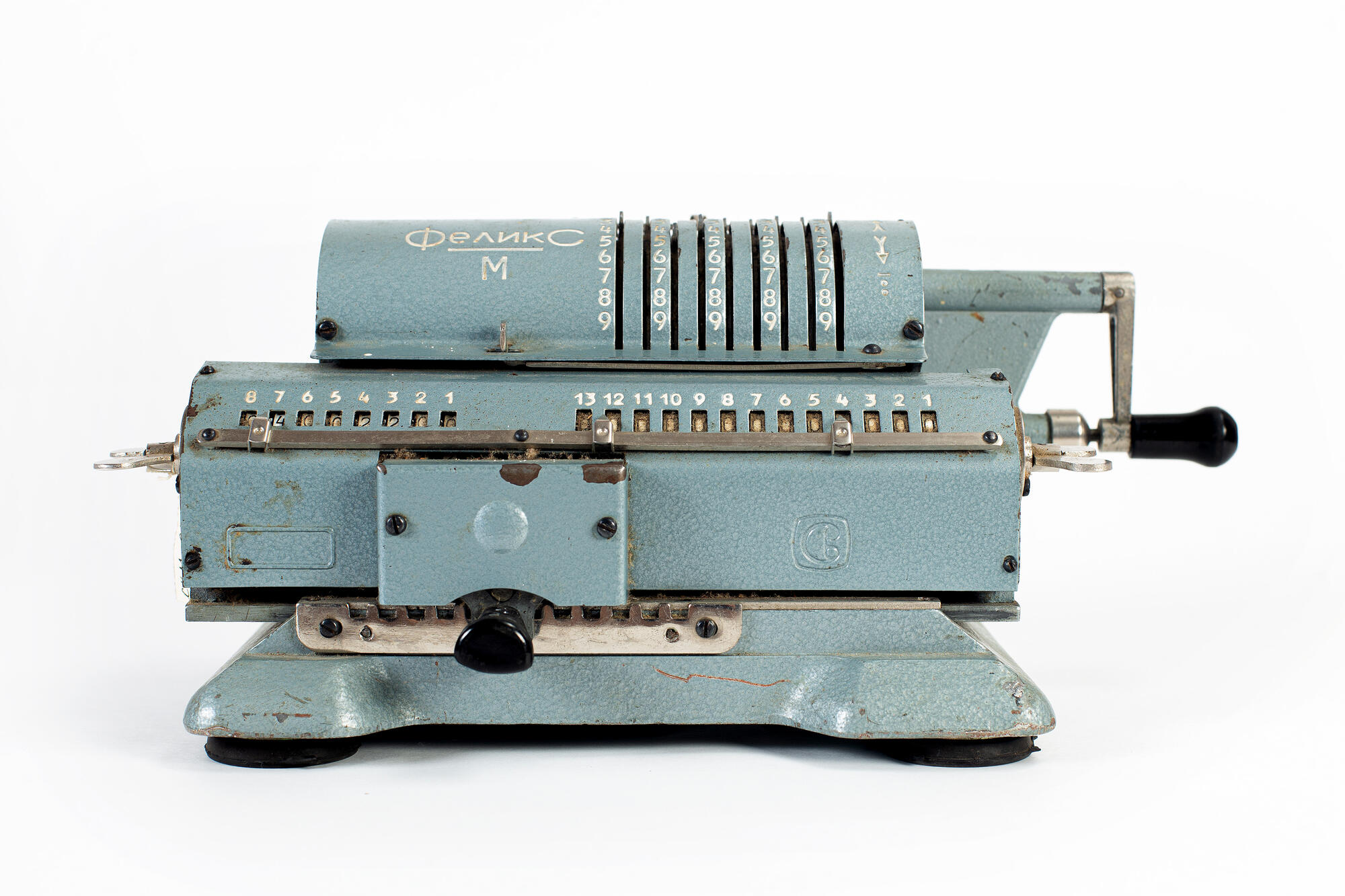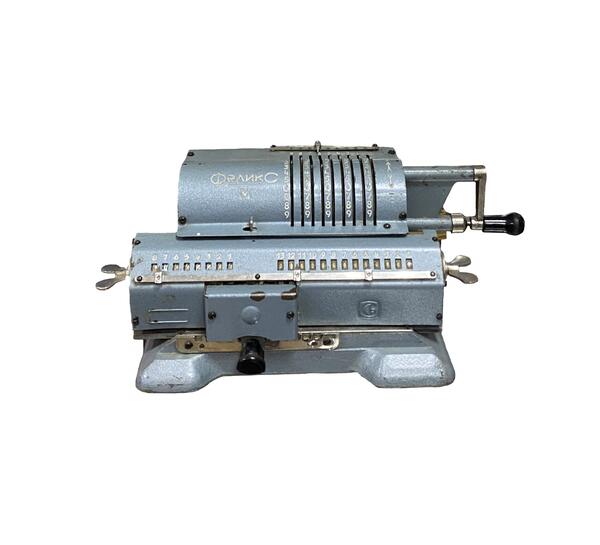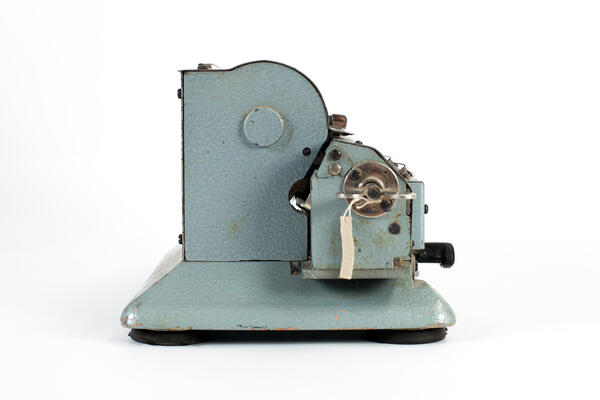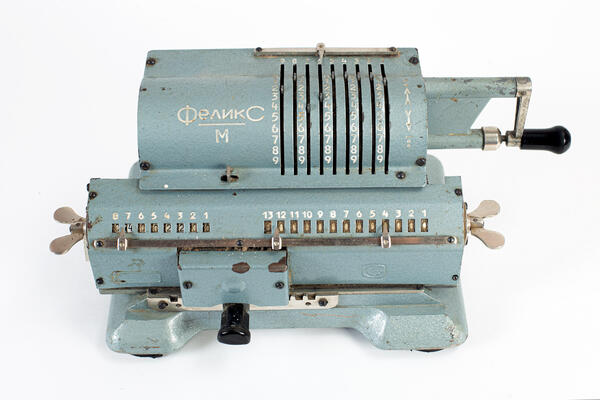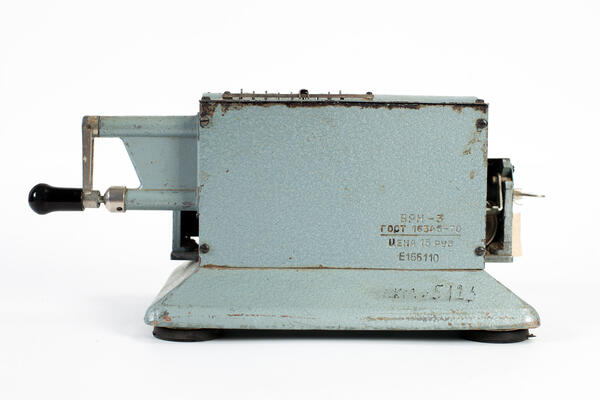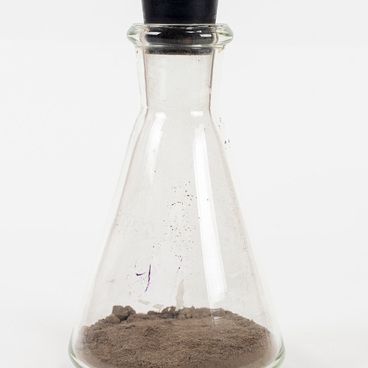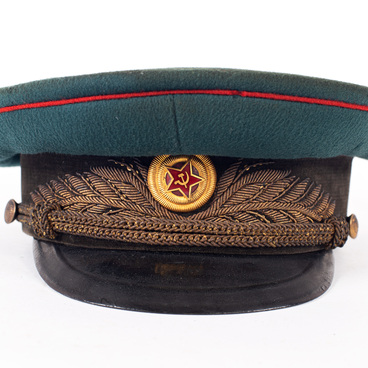The “Felix M” arithmometer was a mechanical calculating device which, before the advent of the electronic calculator, was used to perform complex operations of addition, subtraction, multiplication, and division. To operate an arithmometer, the cylinder had to be rotated and the carriage shifted for units, tens, hundreds, and larger numbers. The right side of the arithmometer had an addition and subtraction knob, which was turned toward the operator for addition and away from the operator for subtraction. There are two levers on the front of the device to reset the numbers entered and the result of the calculation.
The principle of the arithmometer is based on the internal rotation of the toothed wheels. With constant practice, the user’s movements became automatic. The numbers for division were set by analogy with “long division”, and the result window would show the total. If the subtraction or division resulted in a negative number, a bell rang in the arithmometer. In this case, the last operation should be canceled by turning the arithmometer knob in the opposite direction.
The process of developing the arithmometer continued from the 16th to the 19th century. An important milestone was the first automatic arithmometer by Pafnuty Chebyshev. It was donated to the Paris Museum of Arts and Crafts. In 1890, mass production of the Odhner arithmometer, named after the Russian-Swedish inventor, began in Russia. After the revolution, the USSR mass-produced “Felix” arithmometers, named after the party leader Felix Dzerzhinsky. By 1978, several million devices in more than 20 modifications had been produced. They were used by scientists, secretaries, and economists; arithmometers were also used to teach children at school.
The “Felix” devices were produced by the “Schetmash” plant in Kursk. The decision to build the plant was made a week after the victory in the Great Patriotic War, and the arithmometer “Felix” was the first device produced at the new plant. Throughout 30 years, “Schetmash” remained one of the largest manufacturers of electronic computer equipment in the Soviet Union. Today, the plant produces cash register equipment and automobile electronics.
The principle of the arithmometer is based on the internal rotation of the toothed wheels. With constant practice, the user’s movements became automatic. The numbers for division were set by analogy with “long division”, and the result window would show the total. If the subtraction or division resulted in a negative number, a bell rang in the arithmometer. In this case, the last operation should be canceled by turning the arithmometer knob in the opposite direction.
The process of developing the arithmometer continued from the 16th to the 19th century. An important milestone was the first automatic arithmometer by Pafnuty Chebyshev. It was donated to the Paris Museum of Arts and Crafts. In 1890, mass production of the Odhner arithmometer, named after the Russian-Swedish inventor, began in Russia. After the revolution, the USSR mass-produced “Felix” arithmometers, named after the party leader Felix Dzerzhinsky. By 1978, several million devices in more than 20 modifications had been produced. They were used by scientists, secretaries, and economists; arithmometers were also used to teach children at school.
The “Felix” devices were produced by the “Schetmash” plant in Kursk. The decision to build the plant was made a week after the victory in the Great Patriotic War, and the arithmometer “Felix” was the first device produced at the new plant. Throughout 30 years, “Schetmash” remained one of the largest manufacturers of electronic computer equipment in the Soviet Union. Today, the plant produces cash register equipment and automobile electronics.
